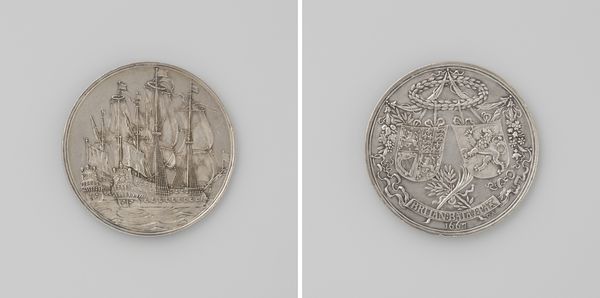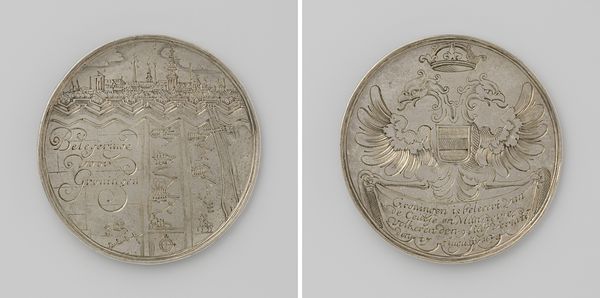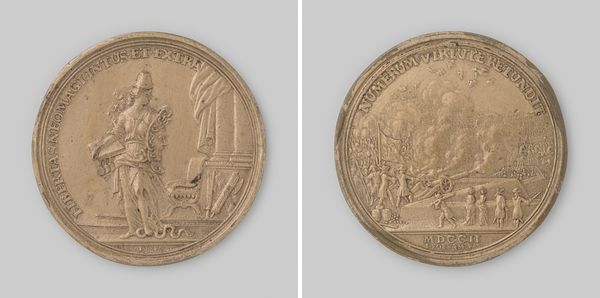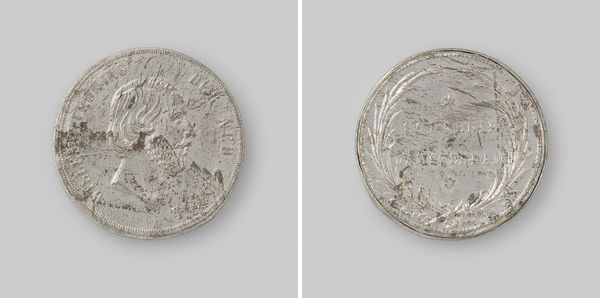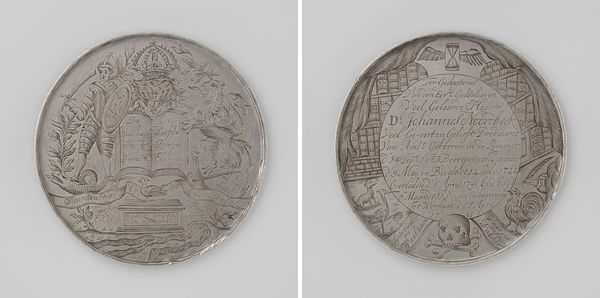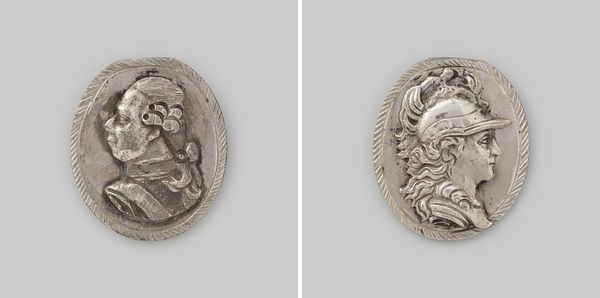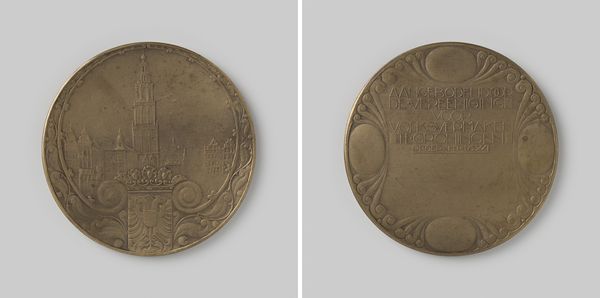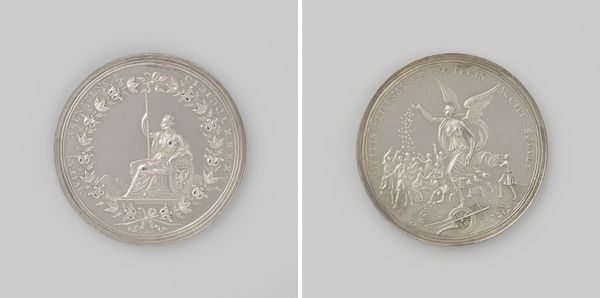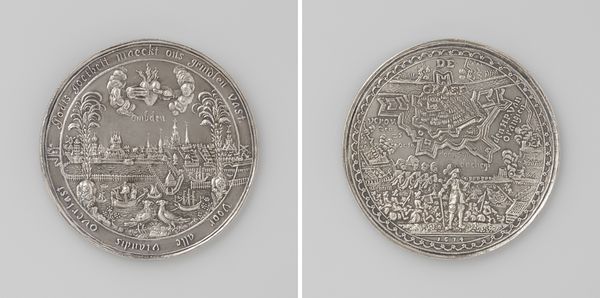
metal, relief, sculpture
#
metal
#
relief
#
sculpture
#
history-painting
#
academic-art
Dimensions: diameter 6.5 cm, weight 110.88
Copyright: Rijks Museum: Open Domain
Curator: This piece here is a commemorative medal crafted in 1909 by Johannes Cornelis Wienecke. Titled "Birth of Princess Juliana," it’s a metal relief sculpture now held here at the Rijksmuseum. Editor: My first impression is one of restrained jubilation. The cool, metallic surface gives a formal air, but the imagery seems to bubble with optimistic symbolism, particularly with those regal figures. Curator: Exactly. It speaks volumes about the sociopolitical context. The medal commemorates a royal birth, so, of course, there's formality. It served as both propaganda and a record. Think about the power a monarchy still held in shaping public imagination in the early 20th century. Editor: Yes, it does seem intended for broad consumption. The symbolic language is surprisingly overt. The allegorical female figure…is that meant to represent the Dutch nation protecting their princess, as the palm leaf, traditionally a symbol of victory or triumph, decorates the scene on the right? Curator: Perhaps! She's likely meant to personify the concept of the state, almost an ancient mother-goddess, nurturing the new princess, and thus securing the dynasty and stability in the country. Even blindfolded. The fruit-laden tree, the royal portraits, all carefully chosen. Editor: Interesting… even the gates at the bottom. They represent some form of inclusion or future possibilities? Also the birthdate juxtaposed on the opposing side adds some balance to the coin. Curator: Well, I read those gates as emblematic of the Oranje family itself. The tree of Orange is meant to continue to grow with the princess birth, and those gates representing a clear way forward with Juliana’s ascendancy. Note also the presence of rays behind them. Everything here points to a bright future. Editor: So it's carefully crafted symbolism geared to reinforce ideas of national identity and future promise. Almost like a visual propaganda campaign rolled into a small token. But what of the blindfold that the standing woman is wearing? It makes the piece all the more questionable in motive! Curator: Now you touch upon an intriguing point. The blindfold, while a conventional symbol for Justice and Objectivity, might suggest a willful disregard for the complexities facing the nation at the time, especially socially or internationally. Everything about monarchy is highly biased and one-sided at the end of the day. Editor: So while superficially celebratory, it also, perhaps unintentionally, highlights the blind faith required to sustain such institutions. It definitely pushes buttons about the history and continuity of those institutions…It’s really remarkable. Thanks for this analysis. Curator: A pleasure. These little objects often tell grand stories about power, hope, and cultural values, a tangible embodiment of our past.
Comments
No comments
Be the first to comment and join the conversation on the ultimate creative platform.
